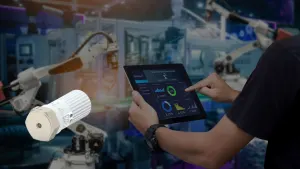Light Sensing: There’s More to It Than Meets the Eye
Light Sensing: There’s More to It Than Meets the Eye 
Sunrise sets the rhythm of our days. It’s a reminder that everything begins with light, and our ability to perceive it shapes how we interact with the world. Electronics, in many ways, are no different. They too rely on light, not just to illuminate, but to inform—and Texas Instruments (TI) has been steadily expanding the role of light in technology through its growing portfolio of optical sensors.
For years, light sensors were often seen as behind-the-scenes components—quietly adjusting display brightness or dimming an LED. But today, their story is much bigger. They are central to how products adapt to users and environments, and in some cases, they’re enabling entirely new features. It’s a space that feels less like incremental engineering and more like a frontier, where physics, optics, and electronics converge.
Nature, as it often does, provides a lesson in what’s possible. Some animals see in the infrared, cutting through murky waters. Others detect ultraviolet wavelengths to locate flowers or have vision sharpened for long distances. TI’s new generation of light sensors is taking similar leaps, extending perception beyond the human eye. High-resolution, broad-spectrum sensing isn’t about mimicking vision—it’s about exceeding it. Devices are expected to function in conditions far harsher than any human environment, and that means sensors must be faster, more sensitive, and more accurate than ever before.
The automotive world offers a vivid example. Imagine a car racing into a tunnel: the driver barely has time to notice the change, but the system must. Within fractions of a second, light sensors feed data to the car’s electronics, ensuring the display adjusts seamlessly. That speed—the ability to react before the user is even aware—isn’t a luxury; it’s a requirement. Reliability plays just as important a role. These sensors must work flawlessly, time after time, regardless of whether they’re tucked into a dashboard, a smartphone, or an industrial system.
Part of TI’s approach is recognizing that a sensor doesn’t exist in isolation. The company not only develops the component but also rigorously tests how it performs in the systems where it will ultimately live. Calibration support, along with tools like TI’s Light Source Evaluation Module, gives engineers confidence that integration won’t just be possible—it will be optimized.
There’s also the matter of size. As the push for thinner bezels and sleeker designs continues, every millimeter counts. TI’s PicoStar package is one answer: an extremely compact sensor designed for the smallest spaces, enabling technology that just a few years ago might have seemed impossible.
What makes this area especially compelling is how much it sits at the heart of what’s next in electronics. Light sensing is not just about brighter screens or energy savings—it’s about building the foundation for smarter systems, systems that can interpret their surroundings with a kind of electronic intuition. That’s why at TI, the work on optical sensing isn’t confined to the lab. It’s about preparing engineers for the future, anticipating needs, and ensuring the technology will be ready when they get there.
There is, indeed, more to light than meets the eye. And as TI continues to push the boundaries of sensitivity, speed, and design, it’s clear that optical sensing isn’t just a supporting role in electronics—it’s becoming one of the defining forces behind where technology is headed.
To Learn More Visit: Texas Instruments (TI.com)












